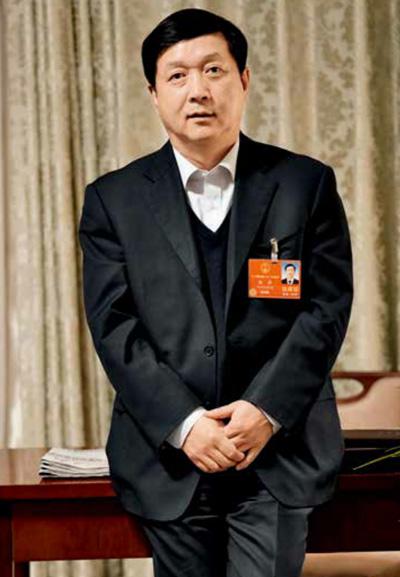Yang Wei Fighter Designer
2018-06-14byHuZhoumengWangLei
by Hu Zhoumeng Wang Lei

On February 9, right before the opening of the 2018 Two Sessions, a piece of news captured public attention at home and abroad: Senior Colonel Shen Jinke, spokesman for the Peoples Liberation Army Air Force, confirmed that the Chinadeveloped stealth fighter J-20 had been officially commissioned into combat service, marking an important step in forming comprehensive combat capabilities.
Alongside this news, Yang Wei, deputy to the National Peoples Congress, chief designer of the J-20 and academician of the Chinese Academy of Sciences, was also pulled back into the spotlight. Over the years, he has engaged in design, research and development of military aircraft and served as chief designer of seven fighter jets including the J-20, remodeled versions of the J-10 and the JC-1.
Yang was sentimental about the J-20. Recently, he wrote a letter to the J-20 in 2035:“When you were born, you were a flash in the southwest corner of China, evoking joy on our side and suspicion on the other. When you grew up, you stunned spectators with your debut at the Zhuhai Airshow, bringing pride to our side and excitement to the other. Later on, you became a strong guard of the motherland, with responsibility on this side and deterrence on the other. And today, you have become the legend of the fighter jet family, the leader on our side and guiding hope on the other.”
When interviewed by China Pictorial, Yang talked more about innovation in the J-20 than technical improvements. “The successful production of the J-20 shows that we have entered the realm of freedom in the field of military aircraft research. The term ‘realm of freedom means that we dont need to follow others rules, but instead use innovative thinking to do research according to Chinas own strategic goals and ways to play the game.”
Yang Wei explained that the current global aviation industry can be divided into three tiers: the United States is on the first tier, China, Russia and Europe are on the second tier, and other countries are on the third tier. After a number of advanced aircraft such as the J-20, J-16 and J-10 joined the air force over the past two years, Chinas fighters have reached the high end of the second tier.
In Yangs opinion, Chinas military aviation industry has progressed rapidly, which was attributed to the implementation of the innovation-driven development strategy put forward by Chinese President Xi Jinping. “The Chinese people cherish peace and will never engage in aggression or expansion, but we have confidence to conquer all attempts at aggression towards us.” In the process of defending the country, more advanced equipment is needed. The equipment is advanced because breakthroughs are constantly being made. Therefore, for the defense industry, the necessity of “innovation” is more demanding and dynamic than other industries.
Yang opined that if China wants to reach the first tier, its most fundamental support will be innovation. “Innovation is not only reflected in technical equipment, but also in equipment development plans and game modes.”
Yang elaborated that the strategic objectives and needs of Chinas military aviation industry are not entirely consistent with other powers of the world. “In the past, the overall design, structure, and performance indicators of Chinese fighter jets were all made abroad, and we just followed suit. Now, after years of development, we have a strategic goal of our own, and are bold enough to create by ourselves where previous knowledge is still absent. The ‘realm of freedom is equipment and technology, which were designed based on the independent demands of Chinas strategy.”
When Chinas military aircraft research achieves unique strategic demand, independent development roadmaps and innovative application ability, the country evolves from a follower to a subject of study.“It was my dream to lure our rivals to study us, and today it has come true.”
After entering the “realm of freedom,” what is next for Chinese fighter jets? “We can see the future by looking back at history, and we will stick to technological improvement and innovation,” Yang said. For example, since the J-10 was massively equipped in the air force as early as 2004, the fighting capacity of the J-10 continued to improve. In the future, just like the J-10, new models like the J-20 will be released, with new capabilities and adaptations for emerging tasks. At the same time, China, the United States and Russias advanced fighter jets belong to the“fifth generation.”
“We all wonder what to do next,”he continued. “There is no doubt that Chinas new fighter jets are also looking for breakthroughs. As long as the country needs it, there will be new fighters.”